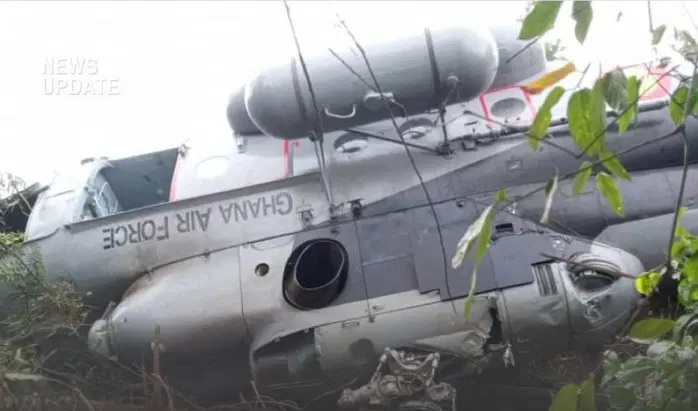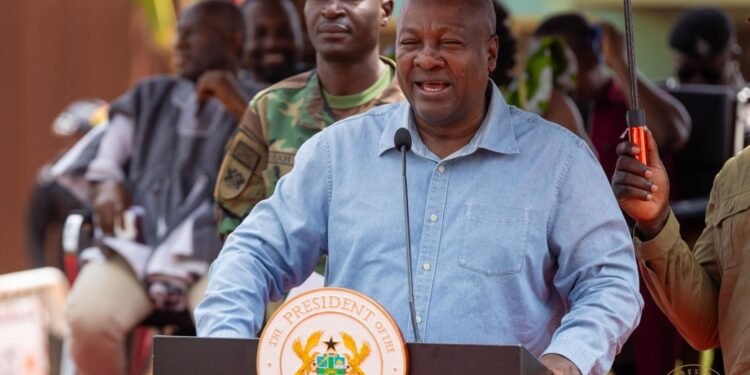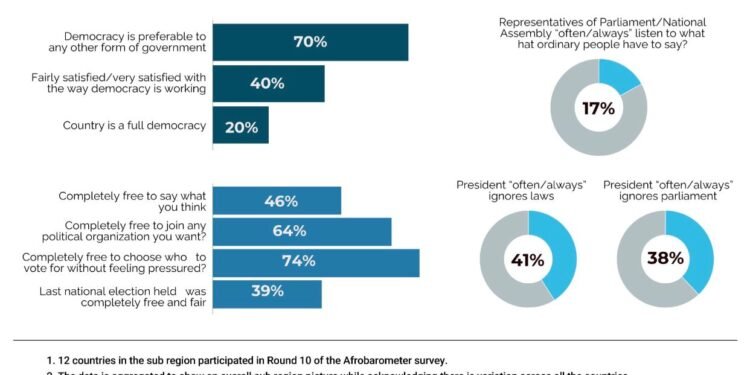Bright Simons of IMANI Africa has raised alarm over the chaos that unfolded at the site of the August 6 helicopter crash in Ghana, describing it as a disturbing display of systemic weaknesses in the nation’s Search and Rescue framework.
While the crash itself was tragic, Simons indicated that the disorder that followed was equally troubling.
According to him, “Something akin to a free-for-all ensued.” Politicians, townspeople, and area farmers reportedly rushed to the forest crash site long before official responders arrived.
Without access control, many were seen carrying debris home under the gaze of security personnel.
Untrained locals without protective gear led search and rescue efforts for hours, while the handful of disaster management professionals present appeared as poorly equipped as the civilians.
“When, finally, some security and disaster response crews showed up, many did not have harnesses, thermal-resistant containers and bags, helmets, descenders, stretchers, extrication devices, medevac equipment, field laboratory equipment, winches, radiation sensing and handling equipment, etc., etc.”
Bright Simons
The haphazard and uncoordinated search, rescue, and accident investigation preparation spectacle was livestreamed on social media throughout the day, with video snippets flooding chat platforms.
Even without expert knowledge, Simons said it was obvious that no risk management principles could be discerned at all.
Simons explained that preserving evidence is as vital as personnel safety. Allowing debris and wreckage to be removed by residents has now made a faithful reconstruction of the accident scene “effectively impossible.”

A central question, he said, is whether Ghana has any ideal framework against which to measure its crash response.
Some commentators dismiss international standards as irrelevant due to “sovereignty,” while others argue that military aircraft are exempt from civil aviation rules.
However, Simons countered that the International Aeronautical & Maritime Search & Rescue (IAMSAR) manual and Ghana Civil Aviation Authority directives clearly outline joint civil-military procedures.
“The said IAMSAR manual is very clear about the critical requirement of aligning military and civil procedures in Search & Rescue matters,” he noted, adding that it covers the use of technologies like emergency locators and satellite tracking systems to quickly pinpoint crash sites.
Standards Ignored And Coordination Missing
Ghana’s own Aircraft Accident & Incident Investigation & Prevention Bureau (AIB) is mandated to investigate accidents — but only for civilian aircraft unless the Minister of Transport authorizes a military case.
Memoranda of Understanding with state institutions, including the military, already exist to bridge this gap.
However, Bright Simons said the glaring problem on August 6 was the “poor lack of coordination” among NADMO, the military, police, fire service, and municipal authorities — despite GCAA manuals assuming such alignment.

“Ghana’s practice of passing an avalanche of laws and regulations… without creating the right accountability mechanisms to incentivise implementation is definitely the primary feature of any katanomic democracy.”
Bright Simons
Workshops as far back as 2021 under the International Civil Aviation Organization (ICAO) called for civil-military cooperation committees, manuals, and joint standard operating procedures — goals Ghana pledged to meet.
Yet, Navy strategists had already lamented poor interagency collaboration years earlier, pointing to miscommunications, overlapping roles, and the absence of clear guidelines.
Simons argued that Ghana has failed to learn from past incidents. In 2000, the Africa-Indian Ocean Region Air Navigation Plan required a Regional Coordination Centre in Accra.
Two decades later, the same problems persist: lack of trained personnel, outdated equipment, and weak agency cooperation.
Technology And Security Concerns Amid Search And Rescue Failures
Simons further stressed that a functional crash-triggered emergency locator, deployed under COSPAS-SARSAT standards, could have sent immediate location data to the Accra Rescue Coordination Centre.
Such technology, he said, need not compromise military security — data can be encrypted, and sensitive details masked.

He questioned the logic of expanding forward operating military bases with limited air assets instead of enhancing rapid deployment capabilities for crash site containment.
Proper national Search and Rescue planning, he said, would also enforce strict black box maintenance to avoid past problems of missing or corrupted flight data.
“It goes without saying that a more rigorous policy-debate culture would also help when Ghana considers what the tragic Z-9 incident means for its air force fleet,” he added, cautioning against confusing crash causes with broader fleet replacement debates.
A Call For Policy Stamina
Simons concluded that Ghana has already committed to joint civil-military standards in crash investigations, but suffers from what he calls a katanomic order — strong political accountability but weak policy accountability.
“The cabinet must be induced by citizen pressure to complete the stunted cycle of policy maturity in the aviation safety sector.”
Bright Simons

Until Ghana develops a dedicated public that follows aviation safety issues closely, policy goals like improved Search and Rescue coordination, electronic aircraft tracking, and stricter accident investigation standards will remain unfulfilled.
He recalled that as far back as 2002, a helicopter crash in Atiwa exposed similar gaps. More than two decades later, Ghana is still relying on untrained civilians to comb through crash wreckage — a shocking lack of national learning that, he insists, must finally end.
READ ALSO: MTN Ghana Shares Hit GHS 3.98, Leading Gainers in Midweek’s Trading























